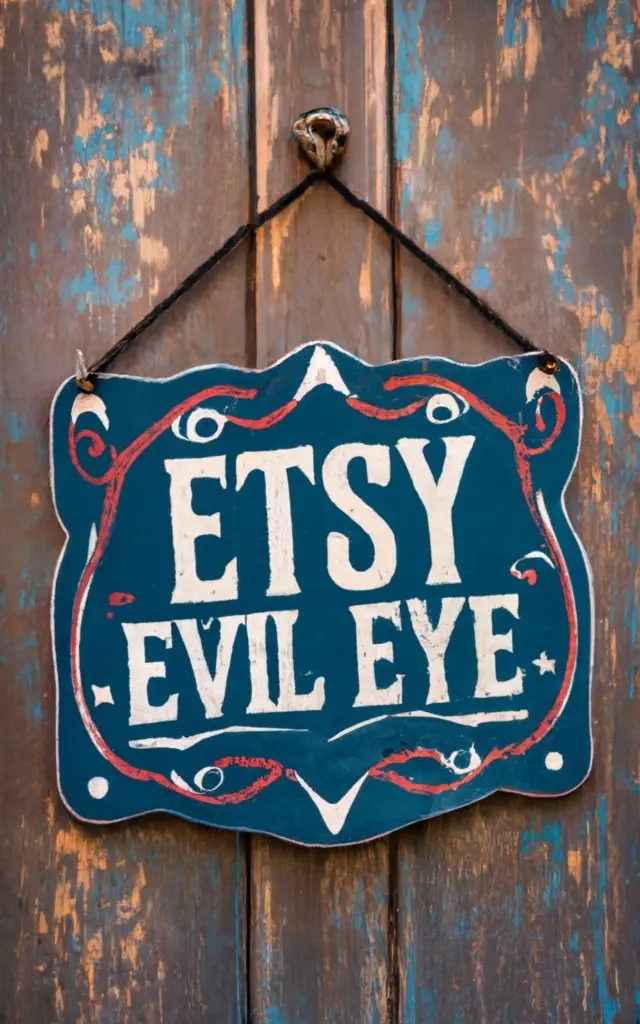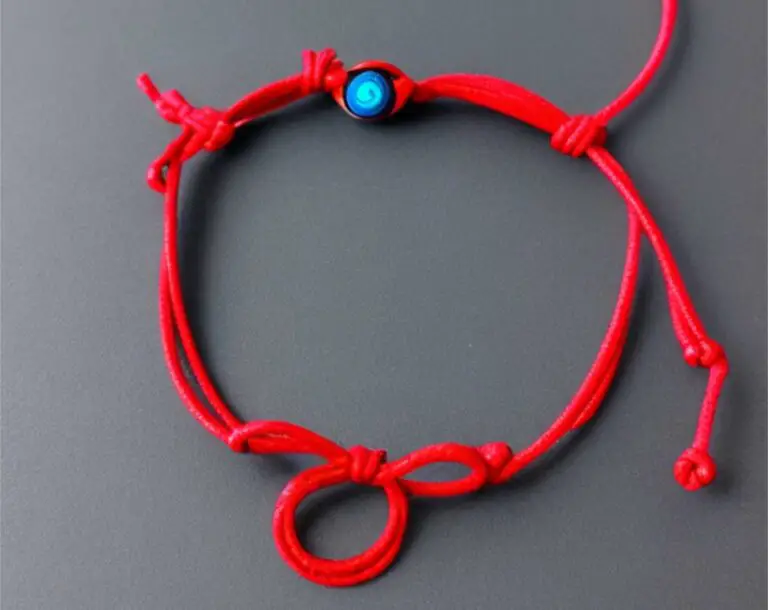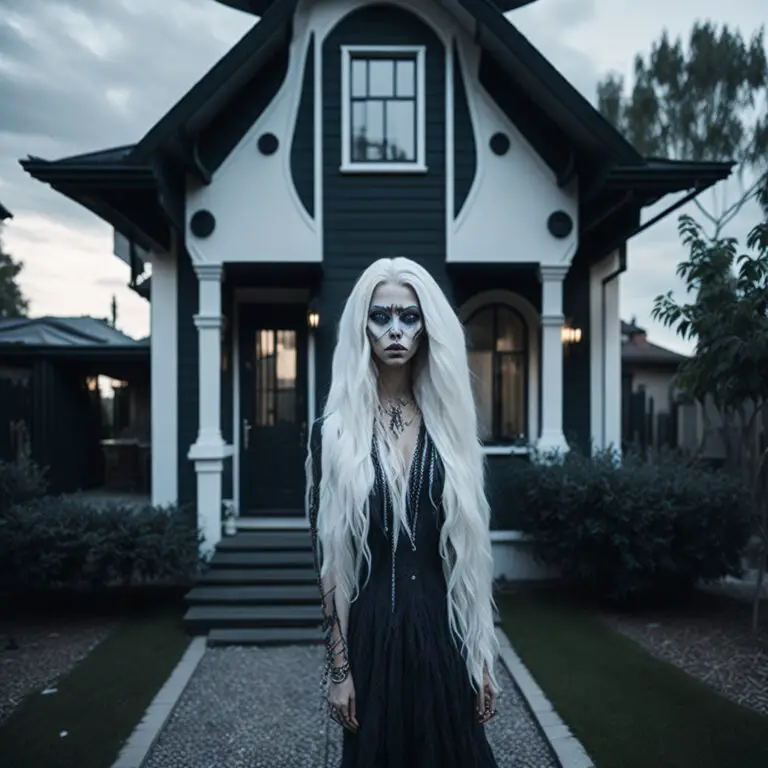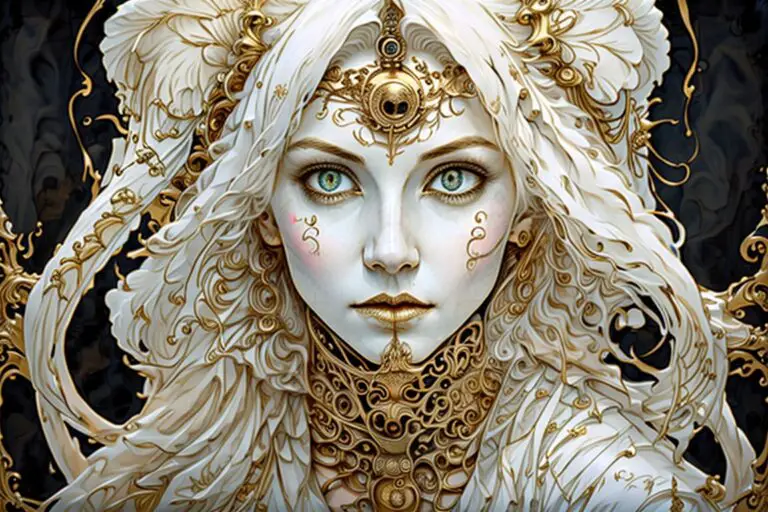Why is Evil Eye Blue?: The Secret Science That Links Its Color to Protection!

IntroductionThe Mystical Gaze of the Evil Eye
Why is Evil Eye Blue? In many cultures around the world, there exists a belief in the supernatural power of the Evil Eye. This enigmatic concept refers to the malevolent glance or stare that is said to inflict harm upon its target.
Whether intentional or unintentional, this gaze is believed to possess an innate ability to cause misfortune, illness, or even death. The Evil Eye has been a subject of fascination and fear for centuries, captivating the imaginations of people across different continents.
A Glimpse into the Concept
The notion of the Evil Eye can be traced back thousands of years and has roots in various ancient civilizations. While interpretations may vary slightly from culture to culture, at its core, this concept revolves around a powerful gaze that carries negative energy. It is widely believed that individuals who possess this mystical ability can inadvertently harm others simply by casting their eyes upon them.
The belief in the Evil Eye transcends geographical boundaries and can be found in regions as diverse as Mediterranean countries like Greece and Turkey, as well as Middle Eastern nations such as Lebanon and Egypt. In some societies, it is even considered an integral part of folklore and religious practices.
Unraveling the Mystery: Why Blue?
Now comes an intriguing question: why is it that when we think of protection against the Evil Eye, we often envision its iconic blue form? The association between the color blue and warding off evil seems almost universal when it comes to talismans and amulets meant to counteract its effects. This preference for blue hues may arise from multiple cultural factors deeply ingrained within our collective consciousness.
Across different societies throughout history, blue has consistently symbolized qualities associated with protection and spirituality. It embodies calmness, purity, and divine connection – traits that make it an ideal choice for repelling negative energy and evil influences.
As we delve further into the world of the Evil Eye, we shall explore the cultural origins behind this belief, unravel the symbolism of blue in different societies, and even touch upon scientific explanations that shed light on our subconscious association between blue and protection. Through this exploration, we hope to shed some light on the enigmatic concept of why the Evil Eye is predominantly depicted as blue.
The Cultural Origins of the Evil Eye
The Evil Eye, a concept deeply ingrained in various cultures around the world, has a fascinating history that dates back centuries. From the Mediterranean to the Middle East, belief in the power of the Evil Eye has persisted through generations, shaping customs and traditions.
In these regions, it is believed that certain individuals possess a malevolent gaze capable of inflicting harm or misfortune upon others. In Mediterranean cultures, such as Greece and Italy, the belief in the Evil Eye can be traced back to ancient times.
It was believed that envy and jealousy could manifest as a malicious stare that would bring about bad luck or illness to its target. This notion still holds great significance today, with many people taking precautions to protect themselves from this perceived threat.
In Middle Eastern cultures like Turkey and Iran, too, the Evil Eye is an integral part of daily life. A potent symbol of protection against this malevolent force can be found in every corner—homes are adorned with blue beads or talismans shaped like eyes to ward off its influence.
The belief in its powers runs so deep that it transcends religion and cultural boundaries. Throughout history, countless stories and legends have emerged surrounding the Evil Eye’s ability to cause harm or misfortune.
Tales of crops withering away under its gaze or individuals falling mysteriously ill after being cursed by someone’s envious glare have been passed down from one generation to another. These narratives not only reflect a fear of this supernatural phenomenon but also underscore its cultural significance in shaping behaviors and protective rituals.
Symbolism of Blue in Different Cultures
A Sea of Meanings: Exploring the Depths of Blue
Blue, the color of the sky and the ocean, has captivated humanity for centuries. Its mesmerizing hue holds more than just visual appeal; it carries profound symbolism in different cultures around the world.
One striking aspect is its association with protection and spirituality. Across various societies, blue evokes a sense of safeguarding from malevolent forces that may lurk in the shadows.
In ancient Egyptian culture, blue was linked to divinity and immortality. The god Amun was often depicted with a blue face or skin, symbolizing his celestial power.
Similarly, in Hinduism, Lord Krishna is portrayed as having vibrant blue skin, representing his divine nature and transcendental consciousness. These cultural associations reinforce blue’s connection to spirituality and an elevated realm beyond our human experience.
A Palette of Tranquility: Blue’s Calming Influence
Another intriguing facet of blue’s symbolism lies in its ability to evoke feelings of calmness and serenity within us. Have you ever found solace in gazing at a clear blue sky or losing yourself amidst rolling waves?
It is no coincidence that many cultures attribute such peaceful qualities to this enchanting color. For instance, Japanese culture embraces “mizuiro,” translated as “watercolor” or “light-blue.” This delicate shade holds immense significance as it represents the tranquil aspects found within water and nature — a balm for our weary souls amidst life’s tempestuous waters.
Additionally, ancient Greek philosophy revered blue for its association with clarity and intellectual pursuits. The Stoics believed that contemplating the vastness of an azure sky could bring forth tranquility and aid in achieving inner peace.
Purity Unveiled: Blue’s Connection to Holiness
Blue also carries connotations of purity and holiness across multiple cultures. In Christianity, for instance, the Virgin Mary is often depicted wearing a cloak of radiant blue, symbolizing her virtuous nature and divine connection. This association between blue and holiness can also be observed in the intricate mosaics adorning Byzantine churches, where the celestial dome above is painted in heavenly shades of blue.
In Hinduism, Lord Shiva is sometimes depicted with a blue throat, known as Neelakantha. This portrayal signifies his role as the Supreme Being who absorbed poison to save the universe during a cosmic battle.
The blue complexion holds deep spiritual significance representing his profound sacrifice for humanity. Throughout history and across diverse cultural landscapes, blue has transcended mere aesthetics to become a potent symbol of protection, serenity, purity, and spirituality.
Its ethereal qualities have resonated deeply within our collective consciousness — a testament to its enduring influence on our perception of the world around us. So next time you find yourself immersed in a sea of blues, remember that beneath its surface lies an ocean of meaning waiting to be explored.
The Connection between Blue and Warding off Evil
Blue’s perceived ability to repel negative energy and evil spirits across cultures
Throughout history, various cultures have associated the color blue with protection against negative energy and evil spirits. This belief is deeply rooted, stretching back centuries. From the Middle East to the Mediterranean, blue has been embraced as a powerful shield against malevolent forces.
It is believed that by wearing or displaying blue objects, one can ward off the influence of evil eyes. In many cultures, the Evil Eye is seen as a malicious gaze that can cause harm or misfortune to those it focuses on.
The color blue acts as a countermeasure against this malevolence due to its association with purity and divine connection. People believe that by having something blue nearby when confronted with an envious or ill-intentioned person, they can deflect any negative energy directed towards them.
Traditional use of blue talismans or amulets for protection against the Evil Eye
One common practice across different cultures is the use of blue talismans or amulets specifically designed to guard against the Evil Eye. These protective charms often take the form of small trinkets, such as necklaces, bracelets, decorative pendants, or even beads worn on clothing.
The materials used for such talismans vary based on cultural traditions but commonly include elements like glass beads in shades of vibrant cerulean or deep azure hues. The choice of blue material enhances their perceived effectiveness in shielding individuals from envious gazes and harmful influences.
These amulets are believed to possess a spiritual power that repels negativity and safeguards one’s well-being. Whether it be a simple glass bead charm blessed by local priests in Greece or an intricately designed pendant made from lapis lazuli in ancient Mesopotamia, these symbolic items hold great significance in many societies.
Moreover, the act of wearing a blue talisman not only provides a sense of personal protection but also acts as a visible sign to others that one is shielded from harm. It serves as a deterrent to those who may harbor ill intentions, sending a message that the wearer is safeguarded and will not be affected by any negative energy directed their way.
The connection between blue and warding off evil is rooted in cultural beliefs that have persisted for centuries. Blue is seen as a powerful color associated with purity and divine protection across various cultures.
Traditional use of blue talismans or amulets further reinforces this belief, providing individuals with both physical and spiritual shields against the malevolent influence of the Evil Eye. So next time you spot someone wearing an eye-catching blue trinket, remember that it might just be their way of safeguarding themselves from negativity and harm.
The Secret Science That Links Its Color to Protection!
Scientific Explanations for Blue’s Association with Protection
Psychological Impact of Blue on Human Perception (e.g., Calming Effect)
When it comes to understanding why the color blue is often associated with protection, we must delve into the fascinating realm of psychology. It turns out that blue has a remarkable impact on human perception and emotions.
Numerous studies have shown that exposure to the color blue can induce a sense of calmness and tranquility in individuals. This calming effect occurs because our brains associate blue with serene environments such as clear skies or peaceful bodies of water.
The psychological impact of blue is not limited to its ability to provide a soothing experience. It also plays a significant role in reducing stress levels and promoting relaxation.
Research suggests that when people are exposed to the color blue, their heart rates tend to decrease, blood pressure lowers, and overall feelings of anxiety subside. This natural association between the color blue and relaxation provides a plausible explanation for its connection to protection against evil.
Evolutionary Reasons Behind Our Subconscious Association of Blue with Safety
To uncover why we subconsciously associate the color blue with safety and security, we must explore our evolutionary roots. Throughout human history, survival was paramount, and our ancestors had to navigate their surroundings carefully to avoid potential dangers or threats. Our ancestors instinctively sought safety in environments such as clear skies or clean water sources since those were indicators of abundance and sustenance.
Consequently, over generations, our brains developed an association between these safe environments and the corresponding colors—blue being one prominent example. This evolutionary connection between safety and the color blue manifests itself unconsciously even today.
Our subconscious mind responds positively when encountering this hue because it suggests a non-threatening environment where we can thrive without fear or harm. Given these psychological principles deeply ingrained within us, it is no surprise that ancient cultures and civilizations chose blue as a color symbolizing protection from malevolent influences such as the Evil Eye.
The association between the color blue and protection against evil can be attributed to both psychological and evolutionary factors. The calming effect of blue on human perception, along with its deep-rooted connection to safety in our subconscious minds, explains why it has become synonymous with warding off negative energies.
Understanding these scientific explanations not only enriches our understanding of cultural beliefs but also illuminates the profound impact that colors can have on our mental well-being. So next time you come across a vibrant blue amulet or talisman for protection, remember that beneath its aesthetic allure lies a rich tapestry woven by both science and ancient wisdom.
VI: Historical Use of Lapis Lazuli in Amulets against the Evil Eye
Lapis Lazuli’s deep blue hue and historical significance in ancient civilizations The mesmerizing allure of lapis lazuli has captivated humanity throughout history. This precious gemstone, with its deep celestial blue hue, holds a special place in the annals of ancient civilizations.
Egyptians treasured lapis lazuli, associating it with the heavens and reserving its use for the elite. The vibrant blue color was believed to symbolize royalty and divinity, making it an ideal choice for ornaments and protective talismans.
How lapis lazuli became a popular choice for protective amulets against the Evil Eye As belief in the Evil Eye spread across cultures, individuals sought ways to protect themselves from its malevolent influence.
In many societies, including those of ancient Mesopotamia and Egypt, lapis lazuli gained prominence as a powerful safeguard against this enigmatic force. The deep blue shade of this gemstone was seen as a potent deterrent to evil energies.
The elaborate craftsmanship that accompanied lapis lazuli amulets further enhanced their protective properties. Intricate engravings depicting divine figures or symbols were often added to increase their potency against the Evil Eye’s gaze.
These amulets were worn close to the body or hung in homes as shields, warding off misfortune and preserving harmony within households.
VII: The Influence of Artistic Depictions on Popular Perception
A: Famous artworks featuring the Evil Eye portrayed in shades of blue The visual arts have played an essential role in shaping our perception of evil eye symbolism.
Throughout history, renowned artists such as Gustav Klimt, Francisco Goya, and Jean-Baptiste Greuze have depicted the Evil Eye in various forms. One striking trend is the consistent portrayal of the Evil Eye in vibrant shades of blue.
From Klimt’s mesmerizing “Bride of the Wind,” where an intense blue eye gazes out ominously, to Goya’s haunting “Witches’ Sabbath,” characterized by a central figure with piercing blue eyes, these artworks have cemented blue as the color associated with the Evil Eye. The captivating allure and intensity of these depictions have reinforced our subconscious association between this ancient symbol and its characteristic hue of deep blue.
B: How these depictions have shaped our perception and reinforced the association between evil eye and blue The power of art lies in its ability to evoke emotions and influence collective consciousness.
Through their captivating portrayals, artists have ingrained within us a strong association between the Evil Eye and its signature color: blue. These depictions have seeped into popular culture, penetrating literature, films, and even fashion trends.
As a result, when we encounter symbols related to protection against evil forces or the Evil Eye today—be it jewelry or amulets—we often find them adorned with rich blues that echo those found in famous works of art. This pervasive connection continues to shape our perception while reinforcing the belief that blue stands as an enduring guardian against malevolence.
VIII: Lesser-known Associations Between Colors and Protection Against Evil
A: Examples from different cultures where other colors are linked to warding off evil While blue remains prominently associated with protection against evil forces like the Evil Eye across cultures, lesser-known examples highlight alternative color associations for warding off malevolence.
In some Asian cultures, red is believed to possess powerful protective qualities, symbolizing vitality and driving away negative energies. Similarly, in certain Native American traditions, white is considered a color of spiritual purity and is associated with protection against evil spirits.
These diverse color associations remind us of the richness and complexity of cultural beliefs surrounding the concept of evil. They demonstrate that while blue may be the most widely recognized hue in this context, other colors carry their own significance, each offering unique forms of protection.
Conclusion for Why is Evil Eye Blue?
The association between the Evil Eye and the color blue runs deep within human history. The historical use of lapis lazuli as protective amulets against this malevolent force speaks to its profound connection with ancient civilizations’ spiritual beliefs.
Artistic depictions featuring shades of blue have further solidified this association in our collective consciousness. While blue remains synonymous with shielding against evil forces for many cultures worldwide, it is essential to recognize that other colors also hold significance in different regions.
This diversity serves as a reminder that our world is filled with unique beliefs and traditions rooted in the pursuit of protection and spiritual well-being. Embracing these varied perspectives fosters a deeper understanding and appreciation for humanity’s rich tapestry—a tapestry where even colors themselves can serve as guardians against malevolence.
Frequently Asked Questions
- What is the meaning behind the blue evil eye symbol?
The blue evil eye is an ancient talisman that has its roots in the Mediterranean and Middle East. It represents a symbol of protection against the envy or ill will of others. The color blue is thought to ward off the negative energy from the ‘evil eye’ glare.
- Why is the evil eye always blue in color?
The blue color is deeply symbolic, representing the vastness of the sky and ocean. It also has associations with divinity, calmness, and transcendence in many cultures. Blue has long been linked with protective powers in folklore, hence its ubiquitous use for the evil eye charm.
- What are some variations of the blue evil eye across cultures?
While the basic meaning is similar, there are subtle variations in how different cultures interpret the blue evil eye. In Turkey it is known as ‘nazar boncuğu’ and often has a dark blue dot at the center. In Greece it is called ‘mati’ and commonly adorns homes. In India it is known as ‘nazar battu’ which protects against jealousy.
- Do people still believe in the evil eye and its powers?
Despite skepticism, many people across cultures continue to believe in the protective powers of the blue evil eye. Stories of positive outcomes after wearing or carrying it reinforce the enduring cultural significance. The prevalence of the evil eye in jewelry and decor shows its relevance.
- Is there some scientific explanation for the evil eye and its effects?
There is no definitive scientific evidence corroborating the efficacy of the evil eye amulet. However, some studies suggest blue light has a calming effect on the nervous system which could have positive impacts. The placebo effect of believing in its protection may also comfort those who wear it.
If you enjoyed this informative article I know you will love:
Evil Eye Bracelet Color Meaning: How Colors Influence Your Life!
- Evil Eye Hand: Unveiling the Mystical Origins and Meanings - February 2, 2024
- Amegreen Amethyst Meaning: Discover the Hidden Magic! - February 2, 2024
- Is The Evil Eye Bad?: A Deep Dive into Evil Eye Taboos - February 2, 2024








